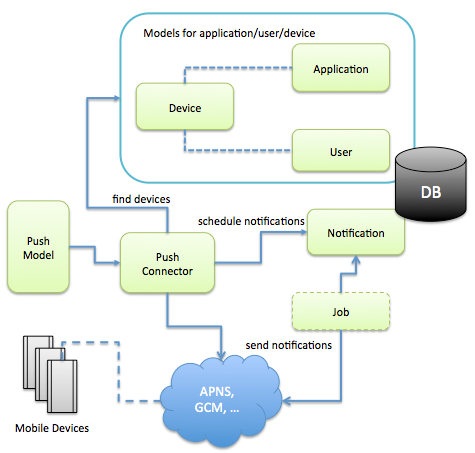README
LoopBack Push Notification Component
⚠️ LoopBack 3 is in Maintenance LTS mode, only critical bugs and critical security fixes will be provided. (See Module Long Term Support Policy below.)
We urge all LoopBack 3 users to migrate their applications to LoopBack 4 as soon as possible. Refer to our Migration Guide for more information on how to upgrade.
Overview
StrongLoop Labs projects provide early access to advanced or experimental functionality. In general, these projects may lack usability, completeness, documentation, and robustness, and may be outdated. However, StrongLoop supports these projects: Paying customers can open issues using the StrongLoop customer support system (Zendesk), and community users can report bugs on GitHub.
This module provides a set of LoopBack models to enable mobile device push notifications.
Please see the full documentation: Push notifications.
The loopback-component-push module supersedes loopback-push-notification. Please update your package.json accordingly.
Architecture

Key Components
- Device model and APIs to manage devices with applications and users
- Application model to provide push settings for device types such as ios and android
- Notification model to capture notification messages and persist scheduled notifications
- Optional Job to take scheduled notification requests
- Push connector that interact with device registration records and push providers such as APNS, GCM, and MPNS
- Push model to provide high level APIs for device-independent push notifications
Samples
Node.js server
This module includes an example LoopBack server application.
To run it, use these commands:
$ cd example/server
$ npm install
$ bower install
$ node app
Open your browser to http://127.0.0.1:3010.
By default, the application uses an in-memory store for the application/installation data. To change to a MongoDB instance, set the MONGODB environment variable to the MongoDB URL. For example,
MONGODB=mongodb://localhost/demo node app
iOS client
The iOS example app uses the LoopBack iOS SDK to enable and handle push notifications.
Android client
The Android example app uses the LoopBack Android SDK to enable and handle push notifications.
References
- https://developer.apple.com/library/ios/documentation/NetworkingInternet/Conceptual/RemoteNotificationsPG/Chapters/ApplePushService.html
- http://developer.android.com/google/gcm/index.html
- http://msdn.microsoft.com/en-us/library/windowsphone/develop/hh202945(v=vs.105).aspx
- https://github.com/argon/node-apn
- https://github.com/logicalparadox/apnagent-ios
- https://blog.engineyard.com/2013/developing-ios-push-notifications-nodejs
Module Long Term Support Policy
This module adopts the Module Long Term Support (LTS) policy, with the following End Of Life (EOL) dates:
| Version | Status | Published | EOL |
|---|---|---|---|
| 3.x | Maintenance LTS | Dec 2016 | Dec 2020 |
Learn more about our LTS plan in docs.